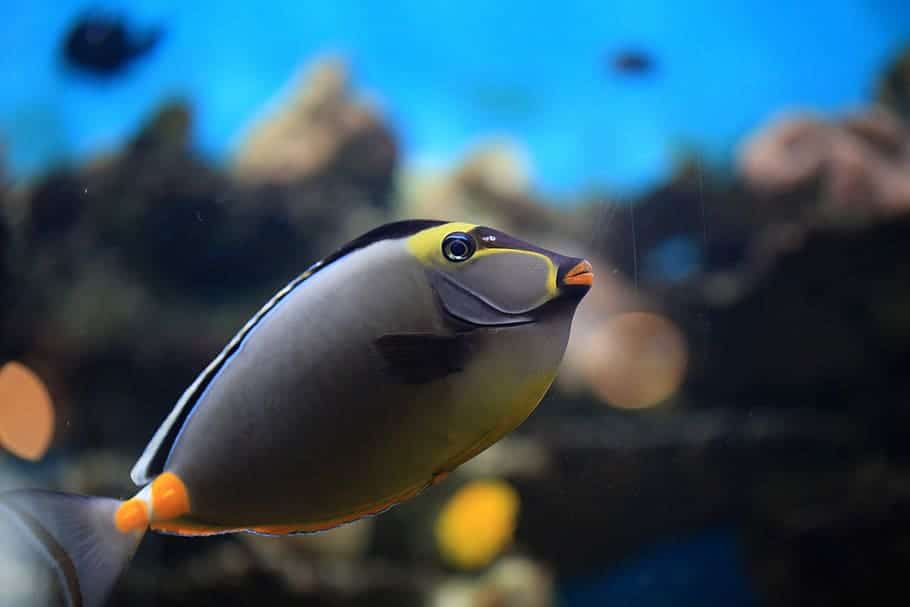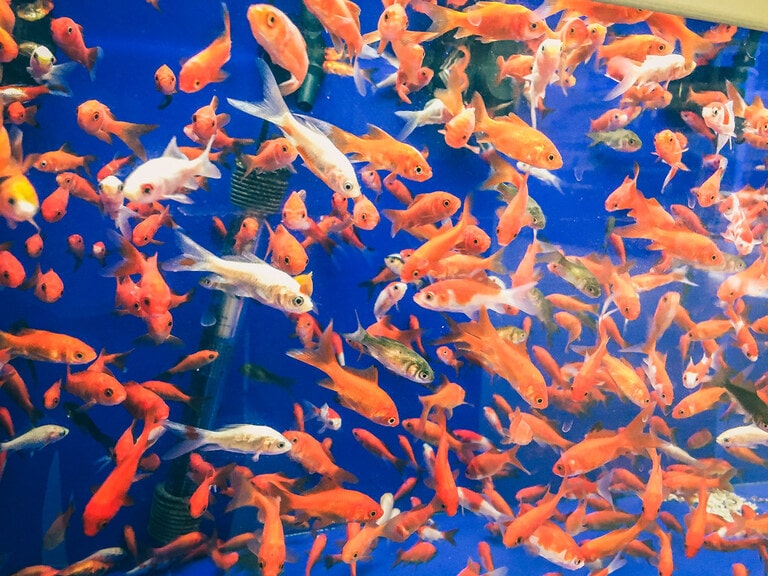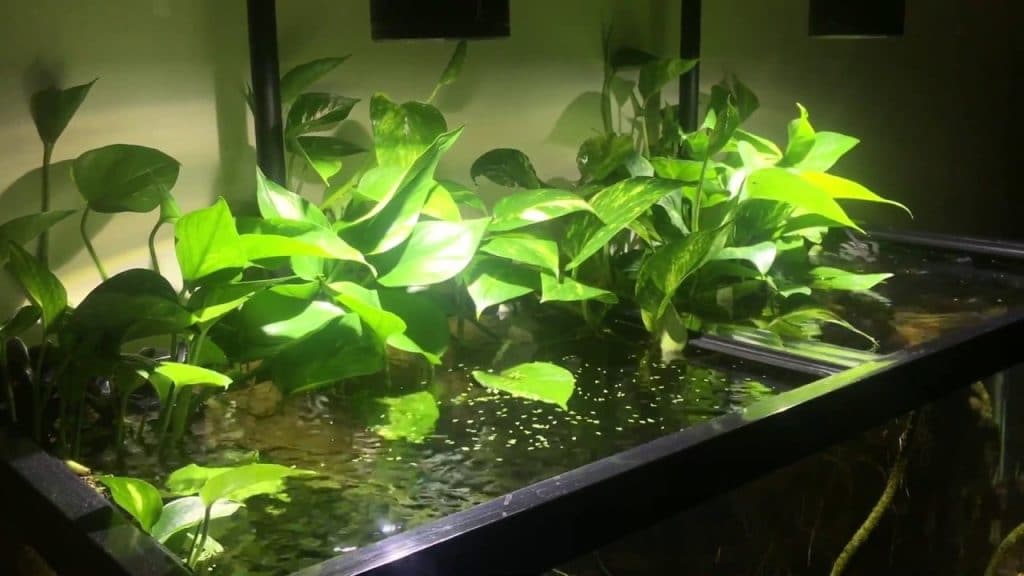Fish are unique and fascinating pets. That is because they are underwater creatures, which is completely different from our habitat.
We can drown in waters since we live on land. But have you ever asked yourself, can fish drown? That sounds like a weird question. But it is actually very commonly asked.
Since they live in the water, we may think that fish can’t drown. However, just like humans, fish need oxygen to be able to breathe. If there’s not enough oxygen in the water, it’s most likely that the fish would not survive.
Of course, they will eventually die from the lack of oxygen. But does it mean that they drown? Today, we will discuss the question along with more information about the fish breathing system.
Table of Contents
Can Fish Drown?
This is the main question. Can fish drown?
Like humans and other living creatures, fish need oxygen to live. It’s just the way they take the oxygen in and their different respiratory system.
Fish make use of the dissolved oxygen in the water to breathe. They ‘drink’ the water and push it to the gills to separate the oxygen and carbon dioxide.
Collecting oxygen is a difficult task for fish. That’s because the oxygen concentration in the water is pretty low. Water only contains around two to 8 PPM (parts per million), while the fish gills can take oxygen in only up to 5 PPM.
That is not a lot of oxygen. For comparison, humans can inhale 210,000 PPM of oxygen from the air. What a difference!
Even though fish are only able to take in so little oxygen, it will be no problem. They are cold-blooded and don’t require much O2. So, is it possible for fish to drown?
Technically, fish can’t drown. After all, fish gulps water to breathe underwater. But they can suffocate from the lack of oxygen in the water.
5 Facts About Fish’s Respiratory System
- Fish do not have lungs
- They use gills to extract oxygen from water
- The oxygen levels need to be at least two million PPM (parts per million) for fish to survive
- Fish are cold-blooded, which make them have a slower metabolism and need less oxygen than warm-blooded animals
- Fish can ‘drown’ or suffocate in waters (more likely in tanks than in nature)

What Are the Organs They Use to Breathe?
Although fish also need oxygen like any other living creature, the way their bodies produce it is different. They have different organs as well!
Most of us may only recognize that fish have gills to breathe. But some particular fish species actually use lungs to produce oxygen. Let’s take a look!
Do fish have lungs?
The answer to this question is clear since it has been provided earlier. Instead of having lungs, most fish have gills.
What are gills? Gills are respiratory organs that can be found on the sides of a fish’s head. Normally, a fish have four gills on each side of its body. The gills are made up of interlinked columns of cells.
How do the gills work?
Before we jump on to the process of how the gills work, there are some facts you may need to know about.
First, the oxygen level in water must be higher than the oxygen level in the fish’s blood so that it can be absorbed.
Second, the gills do a thing called countercurrent oxygen exchange. It is a way to ensure that the gills absorb as much oxygen as possible. This system ensures that the gills take in 90% of the oxygen in the water.
To maximize the amount of oxygen absorbed, the blood that flows through the gills must be in the opposite direction than the water that flows over them.
These are the simple steps to explain how the gills do their job:
- Fish gulps in water by their mouths and other openings in the body.
- The water then flows through the feathery gill filaments.
- The countercurrent oxygen exchange happens. This is where the gills separate the oxygen from the carbon dioxide.
- The dissolved oxygen goes into the bloodstream of the fish to replace the carbon dioxide.
- The absorbed water then expelled from the fish’s body through the operculum.
Fish species like sharks and rays intake the water a bit differently. They have gills on each of their body sides with rigid cartilaginous that keep the gills open. These fish species must swim continuously forward to ensure they have water over the gills.
Lungfish
Most people assume that all fish use gills to breathe. But the truth is, that’s not always the case. A small group of freshwater fish exists with lungs instead of gills. These fish can breathe air!
The lungfish were common in prehistoric times, but now their existence is limited. They are encountered in Australia, Africa, and South America. These fish turn into survival mode during dry seasons when the water in their habitat dries out.
They will dig into the substrate and begin a semi-hibernation state until rains fill in their habitat again. Their metabolism will slow down to 1/60th of its usual rate during this period.
What is a labyrinth organ?
Fish that have lungs can breathe air. But they are not the only ones. There is also many other fish that can inhale oxygen through the labyrinth organ. This organ works like lungs. It takes oxygen in from air rather than from the water.
Typically, fish are not born with developed labyrinth organs. The organ will grow as the fish mature.
These fish are classified as facultative and obligate fish. There are more than 370 species of them.
Although both categories breathe air, there is a slight difference. Facultative fish only inhale air when there’s not sufficient oxygen in the water. On the other hand, obligate fish must breathe atmospheric air since their gills can’t extract enough oxygen from the water.
Some popular freshwater obligate fish include bettas and gouramis.
Signs of Low Oxygen Level In the Water
Low-oxygenated water will cause a fatal result if not seriously taken care of. Here are some symptoms that your fish may lack oxygen:
- Gills move more rapidly and labored breathing
- Gasping at the surface of the water more than usual or for most of the day
- Reduced activity levels
- Lose of appetite
If you notice those signs, the first thing you need to do is change the water. You can change around 50% of it to provide relief since new water have more oxygen. After that, you can take some time to figure out what actually causes the low oxygen level to take further action.
What Causes Low Oxygen In the Water?
Apparently, various things can decrease the oxygen in the water quickly. Some of them may even be unnoticeable. Those unnoticed causes will result in fatal conditions if you have no idea about them. Here are the most common things that make the oxygen level in your tank low.
Overcrowded tank
This is the most common reason behind fish drown or suffocation. That’s why every aquarist or hobbyist needs to understand each fish’s space requirements.
Overcrowding the tank will not only stunt the fish growth and cause stress, but it also gives a higher risk.
The oxygen level is fairly limited in the water compared to the level on land. With the finite amount of oxygen, fish need as much water as possible to gather sufficient oxygen to survive.

With that being said, we can understand that stocking too many fish will lead to a rapid decrease in oxygen. The fish will be competing hard to fulfill their need for it.
If you notice that your fish have difficulty breathing and swim slowly, this might be a sign of an overcrowded tank. You can take out some fish and move them to another tank to prevent your fish from suffocating.
Algae Blooms
Algae blooms will most likely occur in home aquariums. The cause is an excessive amount of nutrients that result from overfeeding. Algae blooms can be scary since it’s normally unanticipated and will quickly turn your tank green.
In this case, we can say that these algae are parasites. They will consume most of the useful oxygen and leave a little portion for the fish. Besides, the algae also cause the bacteria to proliferate rapidly, which will affect the fish’s health.
The algae will eventually die and disappear. Even so, it will take some time for the oxygen level to get back to normal. Some types of algae may also produce dangerous toxins.
Another good news is that algae growth in aquariums tends to be easy to control. Just add some algae eater species and your tank will be safe from algae blooms.
Live plants (especially in tanks with low lighting)

Many aquarists put live plants inside their tank to be an additional source of oxygen. But if you put the tank in a place with poor lighting, the result will be the opposite of what is expected.
Plants require light to photosynthesize. It’s necessary for them so that they can get carbon dioxide and produce (dissolved) oxygen.
If plants are not exposed enough to lightings, they will end up taking in the oxygen in the water to survive. Your fish will have to compete for oxygen against the plants, which is initially an oxygen source.
Therefore, providing sufficient lighting is crucial if you keep live plants in your tank.
Use of chemicals
Some certain chemicals may alter the oxygen level in your aquarium. Your fish may get sick and require chemical-based medication for their treatment.
If that’s the case, you need to intensify the water circulation to keep the water clean and safe. You can also use an air pump to prevent chemistry side effects.
Excess waste
Every type of waste is bad for the environment and well-being. For in-home aquariums, it’s usually plants and fish waste.
Those wastes need to decompose. And for that, they require dissolved oxygen, which your fish also need for breathing.
Leaving too many wastes from plants and animals for too long meaning a rapid depletion of oxygen. Therefore, taking the waste out is the best choice.
You can use a gravel vacuum to take out the waste from the tank. Changing the water regularly will also help keep the water clean and oxygenated.
Poor water circulation
Circulated water is good water since they continue to absorb more oxygen from the air. You can’t perfectly mimic the flows or waves like in nature, but you can surely create some.
To keep the water circulated, you can use an air bladder, add more water pumps, or simply clean your filter.
If the water stays still (like in bowls), the oxygen level is certainly low. Poorly oxygenated water will suffocate the fish and may result in death.
High water temperature
We can’t forget the importance of water temperature when keeping oxygen levels. Besides causing stress and anxiety to fish, a sudden temperature change will also reduce the oxygen.
Warmer water contains less oxygen than cold water. That’s because warmer surface performs less efficient exchange between water and air. Therefore, it’s important to check the water parameters regularly to make sure it’s in fine condition.
Is It Possible For Water to Contain Too Much Oxygen?
Some say that water can contain too much oxygen. This is true, but it’s very unlikely to happen in tanks.
Water can have too much oxygen when the environment is located under high pressure. But that is almost impossible to happen at home aquariums.
One of the reasons would be that tanks are usually left uncovered. Therefore, the oxygen that you deliver into the water by airstone or bubbler will easily evaporate through the surfaces.
Tips to Improve Oxygen Levels In Your Water
Lack of oxygen in the water will do your fish no favor. It will only be torture and kill them slowly. Therefore, keeping your water well-oxygenated is highly recommended. The following tips will hopefully help you to prevent any unwanted situations from low oxygen levels.
Keep fish not more than the maximum amount
We know that overcrowding the tank will result in a lack of oxygen. That is why it’s crucial to keep only a number within the maximum capacity of the tank.
Make sure to check the requirements of the fish you’re planning to keep. Provide the biggest tank you can is also a good idea.
Use long aquariums instead of tall ones
Dissolved oxygen is created on the surfaces area. If your tank has a narrow surface, there will not be an adequate amount of oxygen produced.
That’s why it’s not recommended to keep a fish in a bowl or small tanks. Providing long tanks means longer and wider surfaces to generate more oxygen.
Make sure the water temperature is correct
Warmer waters contain less oxygen than cooler ones. This may be tricky if you have an especially tropical fish tank since they require higher water temperature.
But whether it’s a tropical tank or not, the water temperature can sometimes elevate without us noticing. To avoid loss of oxygen, we suggest using an air chiller in the tank.
Use water pump
To generate more oxygen, you can use water circulation tools such as bubbler or stream. The bubbles formed by the equipment are filled with oxygen which is beneficial for the fish. It is also a good way to get the oxygen circulated throughout the water.
Fun Facts
The previous sections cover everything about the fish respiratory system and all stuff related to it. Now, we have here some fun facts that wouldn’t hurt to know about. They might even be useful or answer some of your curiosities.
Can fish survive in milk?
Fish live in the water, which is a liquid. Milk is also a liquid. So, can fish survive, or at least breathe, in milk?
Fresh milk is perhaps too thick, but skim milk is composed of roughly 90.4% water. Maybe fish can live in there?
The answer is no. Even skim milk still contains fat, proteins, carbs, with low oxygen levels and acidity. Those things will block the gills for sure. If you put your fish in milk, you may see them suffocate within a few minutes.
Can fish drown if pulled backward?
The gills need a lot of water passing across them to produce enough amount of oxygen. If you pull your fish backward, there won’t be sufficient water to process.
So, can fish drown if you drag them backward? Yes, they can. Fish will quickly suffocate because of the oxygen shortage and not being able to keep the effort.
In conclusion
Drown may not be the right term for fish since they gulp water while submerging. Instead, you can say that your fish is suffocating. They need a generous amount of oxygen to survive, just like us.
That is why it’s crucial to maintain the oxygen level in your tank if you want your fish to thrive happily. Now that you know what causes low oxygen levels and how to fix it, we believe you can provide the best care for your fish.
Do you have any more tips or questions for us? Please feel free to leave some in the comments!






